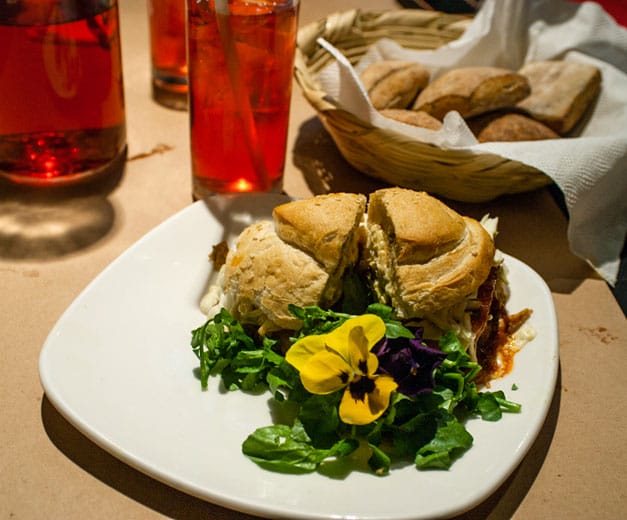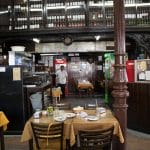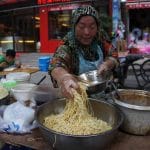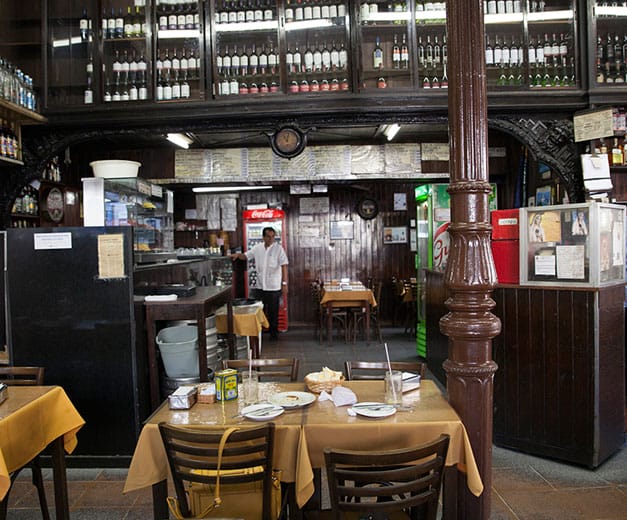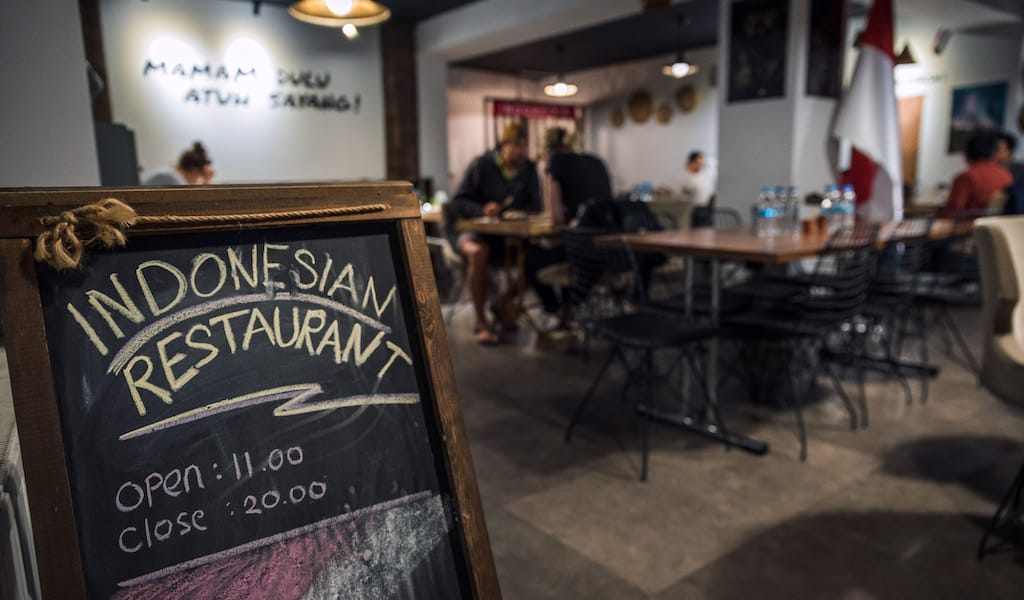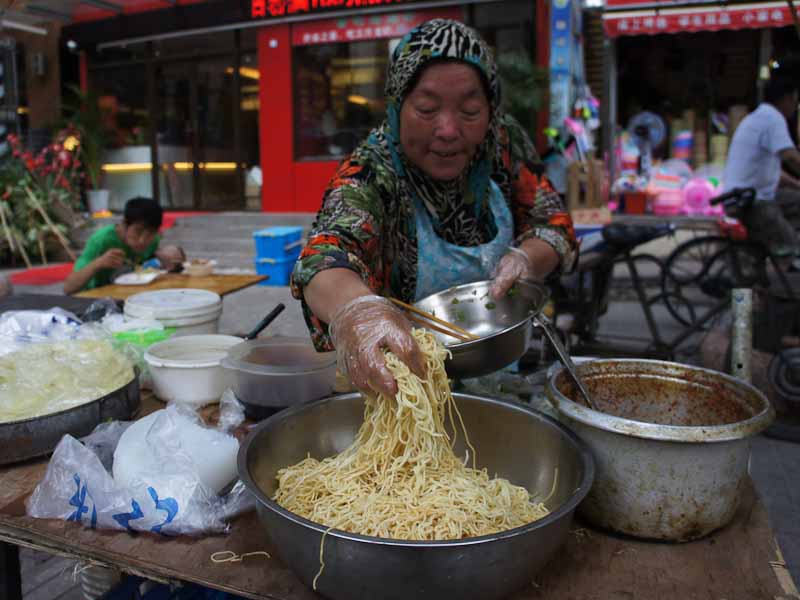While its neighbor to the north is known as a melting pot, Mexico itself is a veritable queso fundido of ethnic and cultural diversity. The merging and clashing of the indigenous and Spanish religions, customs and ingredients have given every region of the country its own traditions, holidays and cuisine. And because Mexico City draws immigrants from all over the country, the capital’s food offerings have become among of the richest in the country.
The cooking of Puebla, a city just a couple of hours east of the capital, is considered by many to be among the country’s most exquisite. In Mexico City, the cuisine gets its due at Angelopolitano, a restaurant that has been generating raves since chef Gerardo Quezadas, a native poblano, opened it less than a year ago. Julio Lugo, the manager of the restaurant, told us that Quezadas has opened and then sold many restaurants with many different concepts throughout his long career. Angelopolitano, however, is a project born out of love for la cocina poblana. “People have tried to buy the restaurant and its concept, but despite the many troubles we’ve gone through with this place, Gerardo is not willing to sell.”
Quezadas’s love for la cocina poblana has been clear in every bite we’ve had at Angelopolitano. The restaurant is named after one of the most important symbols of the city of Puebla: angels. While the chef’s ambitions and standards are high, he keeps the prices, portions and tastes close to those you would find in the markets and family-owned restaurants of Puebla. Quezadas adds his own touch to traditional dishes, but in them you’ll find echoes of the long line of cocineras who have prepared them for generations.
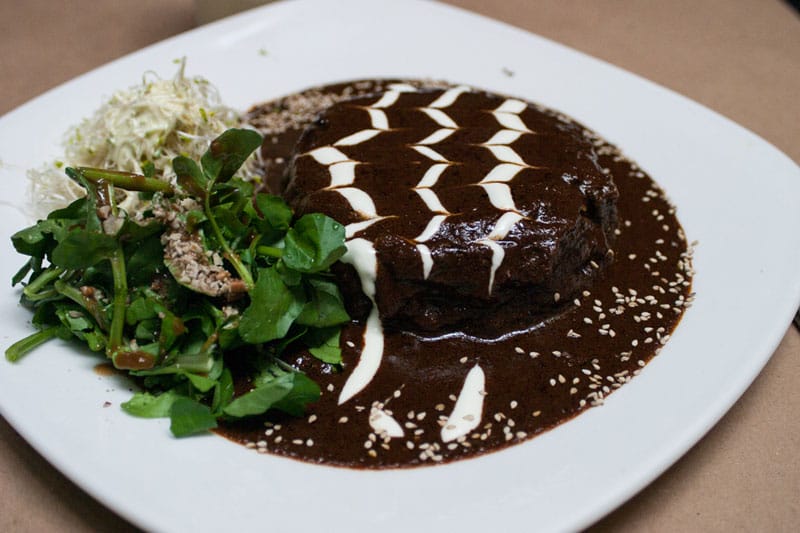
A good example of this is the mole poblano, perhaps the best known mole inside and outside of Mexico. Quezadas bases his on a recipe from a 19th-century cookbook, which combines the pleasant bitterness and sweetness of chocolate with numerous savory ingredients and spices, making for a profoundly complex and fascinating dish. To this, he adds edible flowers, which brighten not just the dish’s appearance but also its flavor. We also loved the mole verde picosito (spicy green mole), tortilla soup, chiles mecos (dried chipotles filled with ground beef, chicken and refried beans in tomato sauce) and the cemitas, sandwiches made with a special egg and sesame seed bread, also called cemita, and filled with pork, chicken, turkey and other ingredients.
But the dish that we would go back for again and again is the champandongo, a tortilla, cream and chicken layered dish blanketed by a spicy mole poblano. Every bite was an explosion of flavor.
The same level of thoughtfulness and care is extended to drinks, such as the refreshing and aromatic hibiscus and rose petal agua fresca. Dessert is no slouch either; we recommend the pear with raisin liqueur and the panqué ninon, a delicious cream bread bathed in almond rompope.
The food is not the only draw; Angelopolitano is beautiful inside and out. The restaurant sits in an airy 19th-century building – on Puebla Street, no less. Quezadas is committed to social causes, and most of the servers are senior citizens who would likely have a hard time finding employment in other industries, but fit right in at this homey restaurant. “The idea is to serve fresh, homemade food,” Quezadas told us. “Just like if you were visiting your aunt’s house.”
Published on March 12, 2014
Related stories
January 10, 2014
RioIn a city filled with Technicolor snack bars, Casa Paladino Comestíveis instead looks more like the kind of place where you’d find seedy men smoking cigars in a black-and-white film. Glass cases lining the walls display manila-labeled cachaça and Cuban rum bottles, with an occasional anachronism, like boxed Toddynho chocolate milk, breaking its turn-of-the-century salon aesthetic. Cloudy…
October 25, 2019
Istanbul | By Geoffrey Ballinger
IstanbulThe first thing we noticed when we ducked into Koali on a late summer afternoon was the sudden change in ambiance, a veritable culture shock from the sloping, hookah bar-lined street we had just walked down. Keroncong and pop sunda classics, the kind of music you might expect to hear in a beach hut in…
September 3, 2013
ShanghaiFood lovers mourned the loss of Shanghai’s Muslim market when it packed up its stalls back in May, but the closure wasn’t too unexpected. Street food is always in a state of flux in Shanghai, and add to that the ethnic tensions that have developed between the Chinese majority Han and the Muslim minorities that…







































